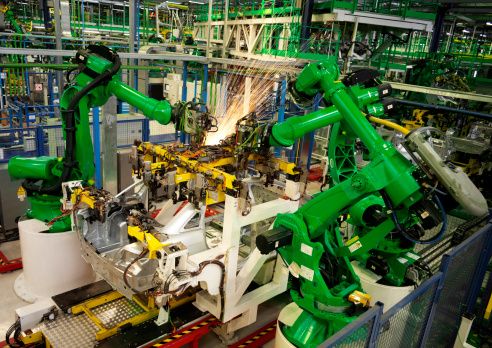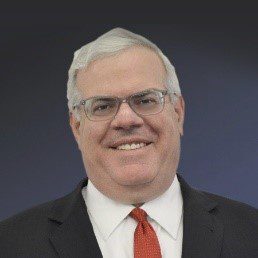 As the Industrial Internet of Things (IIoT) has evolved, manufacturing organizations have gained access to more information than ever before. At the same time, global supply chains and production processes have become more complex, and support increasingly sophisticated products.
As the Industrial Internet of Things (IIoT) has evolved, manufacturing organizations have gained access to more information than ever before. At the same time, global supply chains and production processes have become more complex, and support increasingly sophisticated products.
Furthermore, companies are under growing pressure to design global supply chains that can accommodate changing tariffs, regulatory requirements and supply chain disruptions. Technology is often deployed to help manage this complexity. But, this technology creates a substantial amount of data that while related, often exists within different systems and cannot be easily integrated and analyzed for actionable insights.
By integrating mission critical data correctly, executives have an opportunity to achieve superior business outcomes. For some companies, advances in manufacturing automation, analytics and cloud technology have converged, helping them attain new levels of efficiency, supply chain flexibility and quality.
The Importance of Real-Time Visibility and Control
A chief operating officer (COO) deals with complexity and supply chain disruptions every day. COOs may oversee anywhere from five to fifty factories around the world and travel constantly. While on the road, they want to know what’s happening in their factories in real-time and from any location. At the same time, a chief procurement officer (CPO) wants to know that key suppliers or feeder factories are ready to ship materials on time in order to avoid factory downtime.
Five years ago, Sanmina integrated a number of cloud-based manufacturing solutions. Using this system, manufacturing leadership can instantly access a very detailed snapshot of what’s going on in each of Sanmina’s 70 factories. In aggregate, Sanmina has connected over 25,000 pieces of manufacturing equipment via the cloud in these factories. An executive can be at an airport anywhere in the world, flip open their laptop and view a “digital twin” of factories in other parts of the world, accessing data collection points in real time. This enables them to review a wide range of data or trend charts from test equipment or other data collection points connected in the cloud. The system can also be programmed to send text or email alerts to anyone in their organization when yield, throughput or other KPI’s fall outside of preset limits.
Real-time visibility not only empowers executives with a clear understanding of what’s happening in their factories, it also changes the factory culture by instilling a greater sense of accountability among workers. People on the manufacturing floor know that if an action isn’t taken to control a condition within a certain amount of time, an alert will be escalated to factory management.
Mistake-Proofing Production and Minimizing the Impact of Product Recalls
This cloud technology can also be used by the executive managing quality for a global manufacturing enterprise. He or she is concerned about “mistake proofing” production and eliminating common errors in manufacturing plants all over the world. Some of the most common causes of product recalls for highly regulated industries, such as medical devices or automotive assemblies, include defective components or operator errors during production. This same cloud technology is used at Sanmina to eliminate these types of mistakes. And, when a problem is found and a recall is unavoidable, the same technology is used to ensure all affected product is recalled, while minimizing the unnecessary recall of good products.
When organizations try to retrace their steps to uncover the root cause of a serious issue, they often struggle with incomplete or unsearchable records. Legacy systems and outdated paper processes have created two problems. First, complete records of component traceability, operator training records and important in-process data have not been recorded. Second, the data that is recorded, such as traceability data and operator training records, are documented in separate databases that cannot be easily merged or electronically searched.
“The intelligent application of cloud technology has given Sanmina executives real-time, actionable insights for their manufacturing facilities all over the world.”
When you connect equipment, material and people’s actions via bar code scans and other information in the cloud in the same database, you create a “forced quality framework.” If a key component is scanned prior to assembly, and is the wrong revision, the systems will prevent that component from being used. If an operator has not been trained to a work instruction that changed yesterday, he or she is prevented from logging into that workstation. If an assembly goes to a workstation and it somehow happens to arrive at the wrong step, the assembly will automatically be rejected at that workstation when the operator scans the assembly’s bar code.
More importantly, a complete record of all operator actions, test data, in process data and component traceability data exists in the same database and can be easily searched. For example, complete production histories of assemblies built four years ago can be comprehensively searched. Production errors can be quickly isolated. Manufacturers no longer have to “guard band” a recall or unnecessarily pull products from the field that were manufactured correctly, because they have access to complete and fully integrated production records.
Over the past several years, this cloud enabled approach has resulted in dramatic improvements in quality and regulatory compliance. For Sanmina’s medical business, this new technology is especially important. For example, during a FDA audit, the auditor sees the power of an accessible, searchable database and no longer has to wait for physical records to be pulled from an offsite storage location for review. Instead, quality records are available digitally and can be reviewed in real time, increasing the auditor’s confidence in the entire quality system.
The C-Level Impact of Cloud Enabled Technology
Over the past several years, we have seen a shift from simply deploying tools such as IIoT, data analytics and sensors to instead integrating these technologies for C-level impact. It is no longer about overcoming barriers with these technologies, but instead defining the right problems to solve within the enterprise. The intelligent application of cloud technology has given Sanmina executives real-time, actionable insights for their manufacturing facilities all over the world. It has made our factory personnel more proactive in some cases, knowing that the same real-time production data they see is also seen by Sanmina executives.
This same technology has also made a real impact to the way we manage global quality, where the risks of regulatory non-compliance are just too great for Sanmina and our customers. Because the technology promotes a “forced quality framework,” it eliminates some of the most common sources of product recalls. In the event of a recall, it provides an integrated, searchable database that minimizes the number of impacted products.
Finally, this technology has transformed comprehensive factory data into actionable intelligence, in real-time and accessible anywhere in the world. We now have an integrated cloud solution that consolidates factory equipment and sensor data worldwide, for real-time factory visibility and control. The results have been tangible, with improvements in product and operations costs, quality, compliance and factory culture.
Related: 5 Ways Middle-Market Firms can Maximize the Advantages of Cloud Technology


0

1:00 - 5:00 pm
Over 70% of Executives Surveyed Agree: Many Strategic Planning Efforts Lack Systematic Approach Tips for Enhancing Your Strategic Planning Process
Executives expressed frustration with their current strategic planning process. Issues include:
Steve Rutan and Denise Harrison have put together an afternoon workshop that will provide the tools you need to address these concerns. They have worked with hundreds of executives to develop a systematic approach that will enable your team to make better decisions during strategic planning. Steve and Denise will walk you through exercises for prioritizing your lists and steps that will reset and reinvigorate your process. This will be a hands-on workshop that will enable you to think about your business as you use the tools that are being presented. If you are ready for a Strategic Planning tune-up, select this workshop in your registration form. The additional fee of $695 will be added to your total.

2:00 - 5:00 pm
Female leaders face the same issues all leaders do, but they often face additional challenges too. In this peer session, we will facilitate a discussion of best practices and how to overcome common barriers to help women leaders be more effective within and outside their organizations.
Limited space available.

10:30 - 5:00 pm
General’s Retreat at Hermitage Golf Course
Sponsored by UBS
General’s Retreat, built in 1986 with architect Gary Roger Baird, has been voted the “Best Golf Course in Nashville” and is a “must play” when visiting the Nashville, Tennessee area. With the beautiful setting along the Cumberland River, golfers of all capabilities will thoroughly enjoy the golf, scenery and hospitality.
The golf outing fee includes transportation to and from the hotel, greens/cart fees, use of practice facilities, and boxed lunch. The bus will leave the hotel at 10:30 am for a noon shotgun start and return to the hotel after the cocktail reception following the completion of the round.